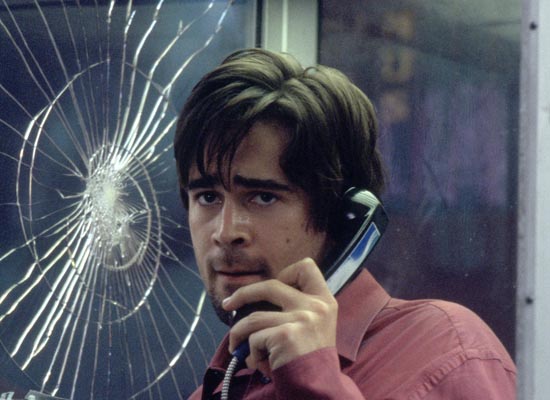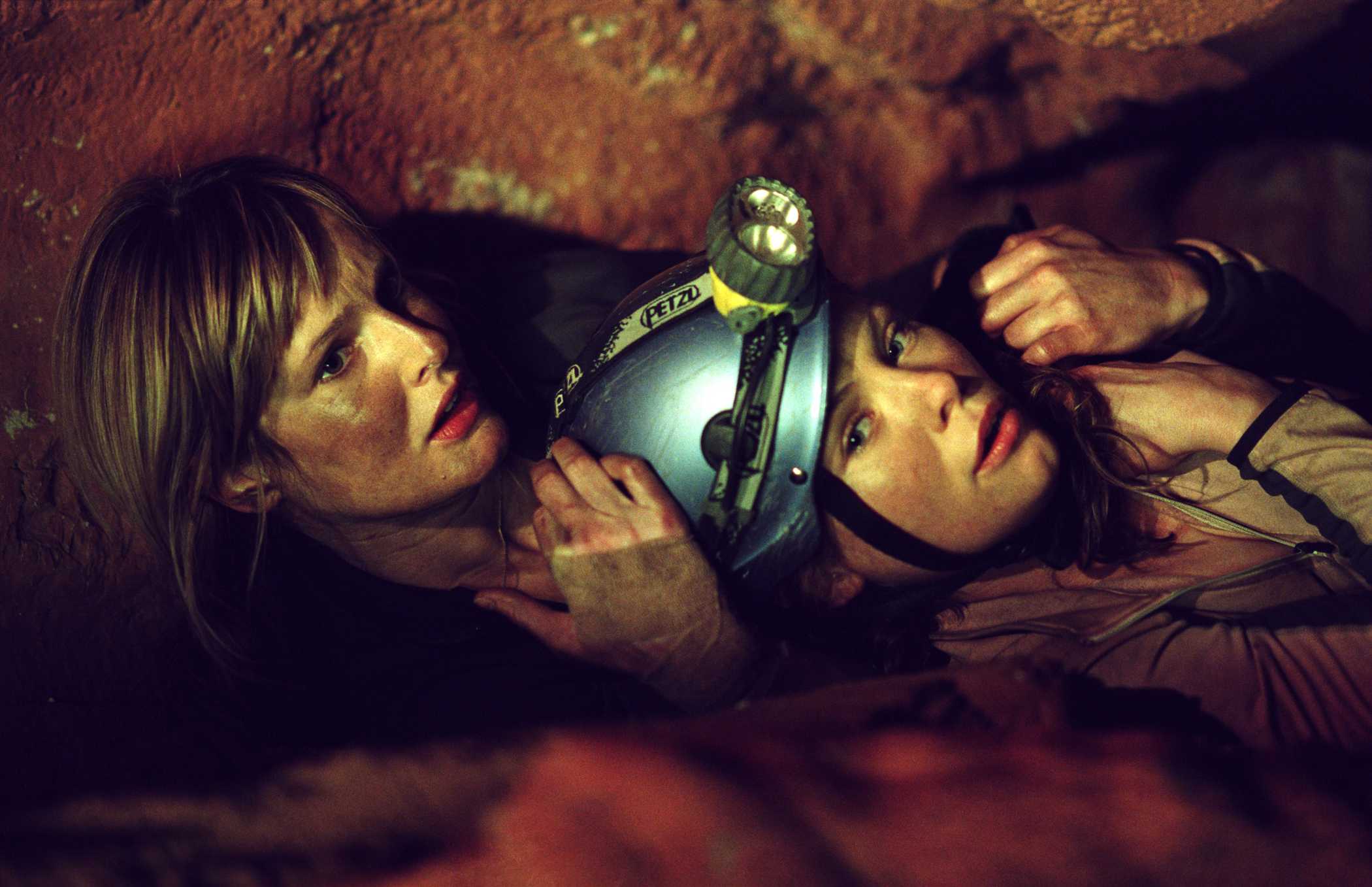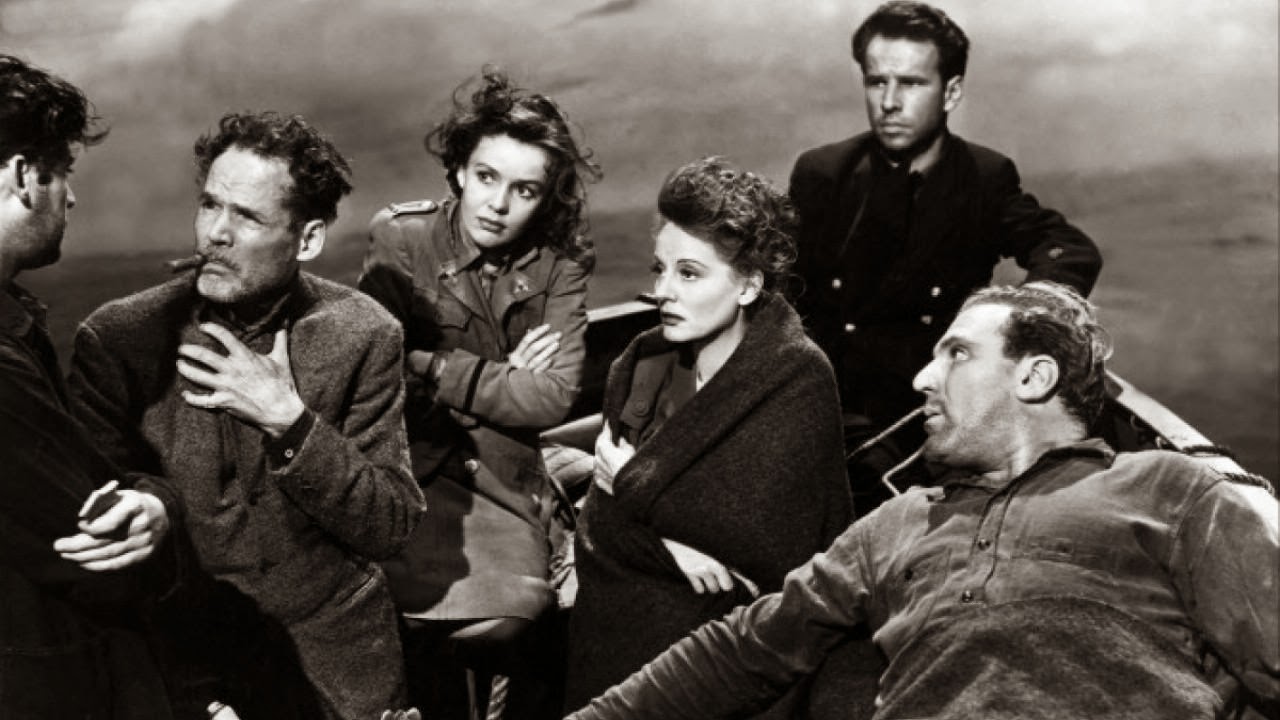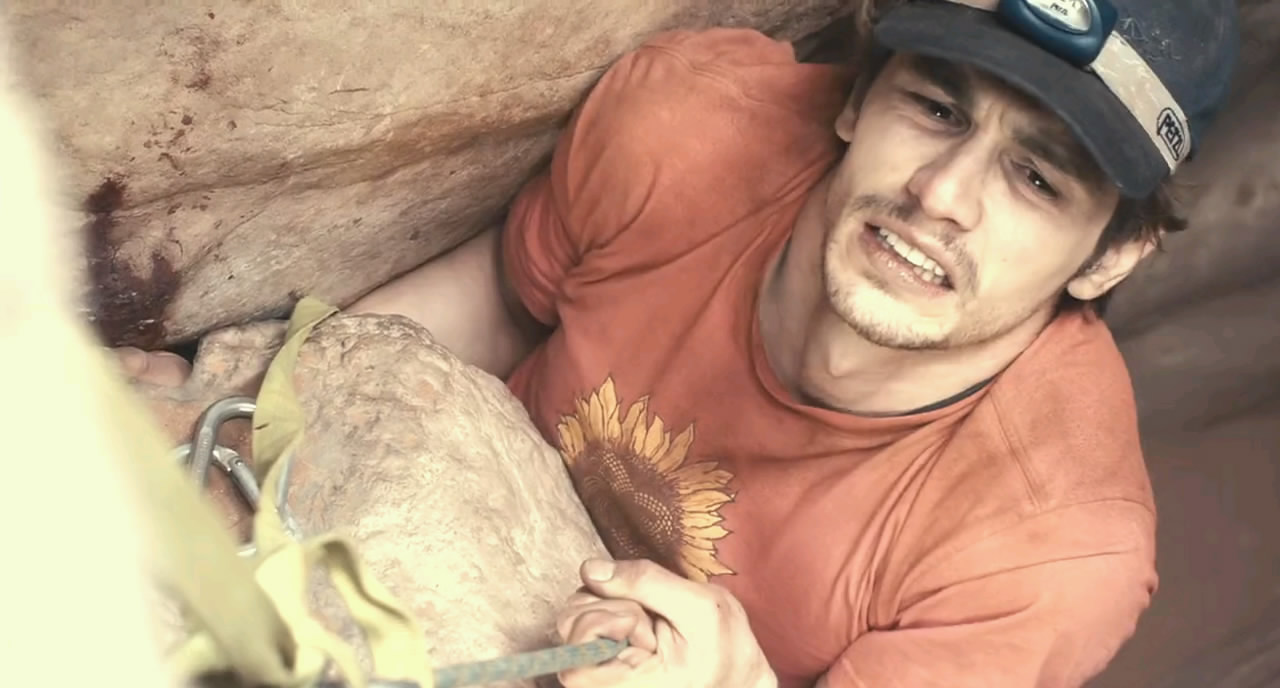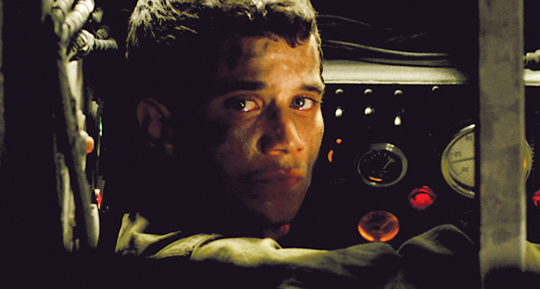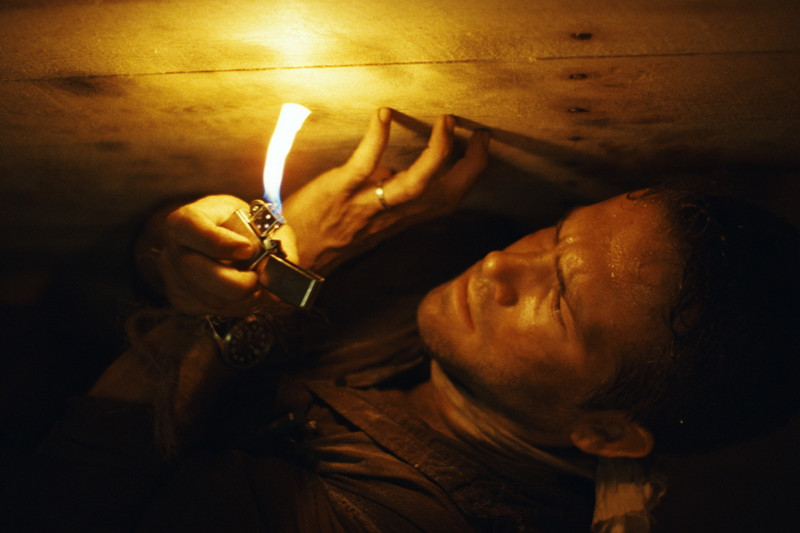9. Rope
Where We’re Stuck: In the apartment where two men have just murdered their former classmate with a length of rope, only to hold a dinner party afterwards as a sort of intellectual experiment.
Why It Works: Alfred Hitchcock’s first color film, ‘Rope’ is most notable for its shooting style. As a challenge to himself, Hitchcock chose to shoot the film in a series of long takes, requiring the actors to memorize pages worth of dialogue as they would for a play. The action takes place in real time, and is completely confined to the apartment. Soon enough, we are totally familiar with the place’s layout, making us not just voyeurs, but almost unwitting accomplices to the two young men. Clearly an influence on future films that made heavy use of the long take such as ‘Irreversible’ and ‘Children of Men’, ‘Rope’ is perhaps most interesting for its subtle gay subtext (the two main actors and screenwriter were all gay), a pretty bold and interesting feat for a movie made in 1948.
8. Phone Booth
Where We’re Stuck: Inside the eponymous (and outdated) structure as Stu (Colin Farrell) is terrorized by an unseen sniper, voiced by Kiefer Sutherland at the other end of the line.
Why It Works: Well that explains it. The idea for ‘Phone Booth’ was pitched all the way back in the ‘60s, but didn’t become a film until 2003. Shot in twelve days and clocking in at an economical 81 minutes, this is a tense thriller that keeps its protagonist in the titular glass box for the majority of the film. As Stu’s predicament intensifies and the cops and media descend, we feel every bit of his desperation and entrapment.
7. The Descent
Where We’re Stuck: In an unmapped cave system in Appalachia with six spelunkers (all of whom are women, by the way).
Why It Works: Fear of blood. Fear of darkness. Add fear of tight spaces to the mix and you have the recipe for one helluva nightmare… and that’s before the monsters arrive! Directed by Neill Marshall, this is a rare example of a film that’s both gory and scary. Proving that storytelling trumps premise (it’s a pretty simple setup, after all), Marshall keeps us hooked from the opening scene with a sympathetic protagonist reeling from personal tragedy. The excellent lighting design and assured editing style (no crazy quick cuts here) make the caves a thoroughly realistic deathtrap. And did I mention the movie passes the Bechdel Test with flying colors?
6. Lifeboat
Where We’re Stuck: A lifeboat.
Why It Works: The oldest film on this list, ‘Lifeboat’ is yet another example of the Master of Suspense at his most self-limiting. The survivors of a German U-boat attack must figure out what to do next, a conflict complicated by the arrival of a member of the very vessel that torpedoed them. It’s both a survival film and an examination of the dynamic that arises between strangers under life-and-death circumstances. The film is an early example of a filmmaker challenging himself with an extremely limiting setting, a task that Hitchcock was more than qualified to tackle – amazingly, he even manages to make one of his trademark cameos!
5. 12 Angry Men
Where We’re Stuck: The deliberation room where an all-male jury debates the fate of an 18-year old boy being tried for murder.
Why It Works: Another film shot in real time, this one is still relevant today (though the lack of gender diversity on the jury probably wouldn’t fly anymore). Tensions rise and prejudices are revealed as the angry men of the title argue over whether or not to convict (and thereby sentence to death) a teenager. As if those stakes weren’t high enough, director Sidney Lumet skillfully changes the camera lenses so that the depth of field decreases as the film goes on, squeezing its subjects into tighter and closer framing. We never do learn the truth about the defendant, but that’s not the point – the dangers of groupthink are the focus here, and it’s a topic made disturbingly transparent in this spare but unflinching masterwork.
4. Das Boot
Where We’re Stuck: In the bowels of a German submarine during World War II.
Why It Works: Yes, the entire cast of characters is fighting for the Nazis, but politics is far from the spotlight here. Instead, we are given an in-depth experience into the daily life of sailors and officers who could reasonably be from any country. With an eye for detail and realism into the sights – and especially sounds – of a submarine in wartime, director Wolfgang Petersen directed this 1981 epic to multiple Oscar nominations. It leaves an indelible impression on viewers as the iconic submarine film (and yes, there have been several others), its depiction of cramped quarters and the ever-present threat of death burned into our cinematic consciousness.
3. 127 Hours
Where We’re Stuck: In Blue John Canyon, Utah with outdoorsman Aron Ralston, whose right arm becomes pinned down by an immovable boulder.
Why It Works: By now everyone knows the story about the dude who cut his own arm off to free himself after being stuck for over five days. While some refused to see this Oscar-nominated film due to squeamishness, they missed out on a harrowing but surprisingly beautiful film about (and forgive the cliché, but it so applies here) the triumph of the human spirit. While Ralston himself, played here by James Franco, originally envisioned a documentary-style film version of his ordeal, director Danny Boyle and writer Simon Beaufoy made all the right choices in depicting Aron’s struggle as a straight narrative film.
But wait! No parallel editing to people looking for him. No lengthy flashbacks depicting his childhood. We’re brutally stuck with him the whole way through, making his eventual drastic decision, while certainly gruesome, all but applause-worthy. If nothing else, his story can also be applied symbolically to anyone who finds themselves trapped in a tough situation of their own making: Sometimes, the only way out is not to hopefully wish for rescue, but to extricate yourself… no matter how painful doing so may be.
2. Lebanon
Where We’re Stuck: Inside an Israeli tank during the 1982 Lebanon War.
Why It Works: Being stuck in a German submarine is one thing, but at least those guys could go for a walk. In this Israeli film released in 2009, we get a gunner’s eye view of the controversial invasion some have termed “Israel’s Vietnam.” Knowing a bit of background on the history of the conflict is of course useful, but hardly necessary to appreciate the grim realities of fighting in a war zone, even from the armored comfort of a tank. Like many war films before it, ‘Lebanon’ sets its sights on the inevitable fear, boredom, and moral ambiguity inherent in fighting any war, but the severely limited point of view and decision to maintain it for the film’s duration sets this one apart in the genre.
1. Buried
Where We’re Stuck: In a coffin. That’s been buried in the desert. For the ENTIRE DURATION of the movie.
Why It Works: Could anything else have really taken the top spot? The equivalent of that scene from ‘Kill Bill: Volume 2’ blown up to feature length, ‘Buried’ relies almost entirely on the power of its writing and acting. Ryan Reynolds plays an American contractor who’s been buried alive in the Iraqi desert with nothing but a handful of items including a cell phone and a lighter. As he struggles to make sense of his situation and find a way out, we squirm in our seats, baffled but nonetheless entertained (if that’s the right word) by the fact that someone has managed to make a film that literally takes place in a box, with one actor (there are other characters seen and heard through the cell phone, but otherwise, it’s a one-man show). A challenging film to sit through, it must have been even more difficult to write and film, and the result is pure cinematic terror at its most minimalist.
Author Bio: Jason Turer received his B.A. from Cornell University with a double major in Film and English, and currently works in television production in Brooklyn. He has too many favorite films to list here, but some of his favorite directors include Kubrick, Cronenberg, Hitchcock, and Lynch.

